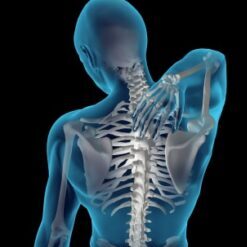
Medical reports: Mechanism of injury needed
Inadequate medical reports for claims pursued via the Official Injury Claim (OIC) portal are causing unnecessary disputes, a leading defendant law firm has said.
DAC Beachcroft said many medical experts were failing to address the mechanism of injuries, meaning it was unclear whether the injury was a whiplash injury, attracting a tariff award, or whether there are additional non-tariff injuries.
The latter are mixed claims, the valuation of which is the biggest unresolved issue with the OIC given that they account for around two-thirds of cases going through the system.
MedCo’s guidance states that the “absence of a mechanism of injury being described” within a medical report would cause a potential clinical concern.
A briefing from DAC said: “Despite this, much of the medical evidence that we have seen does not attempt to address the mechanism of the injury.
“The lack of clarity in the medical evidence is causing an issue with settling these claims and creating ambiguity for both sides as well as the court.”
The firm cited one case where the medical evidence said the claimant had sustained soft tissue injuries to the neck and right shoulder for six months – for which tariff damages were agreed pre-issue at £495 – and an injury to the right arm for five months.
The claimant issued proceedings seeking an additional £2,600 in respect of the pain suffering and loss of amenity resulting from the injury to the arm and argued that this should be considered as a separate injury.
The compensator argued that the arm injury was part of the whiplash injury, referring to section 1(2)(b) of the Civil Liability Act 2018, which states that an injury is a whiplash injury where it is an injury of soft tissue associated with a muscle, tendon or ligament in the neck, back or shoulder.
The court noted that the medical report did not make it clear how the injury to the arm was sustained and provided no detail as to the mechanism of the injury.
As a result, DAC said, the court interpreted the medical evidence on the basis that the arm injury fell within the definition of whiplash and within the tariff award.
“The failure by the medical experts to address the mechanism of injuries and ambiguities as to whether these are part of the whiplash injury or separate and distinct injuries, is causing an increase in unnecessary litigation, putting further pressure on court resources,” it said.
The firm advised compensator clients in such situations to consider whether the injury was in fact distinct.
“In doing so, it is useful to consider the type of accident and how the accident could have given rise to additional injuries. Where there are arguments on the causation of the injury, further information should be sought from the insured driver on speed and impact as well as obtaining any evidence of the accident damage sustained by both vehicles.
“Where there is no evidence that there is a separate injury, this point should be made clear when making pre-litigation offers to the claimant for a tariff-only sum.”














Leave a Comment